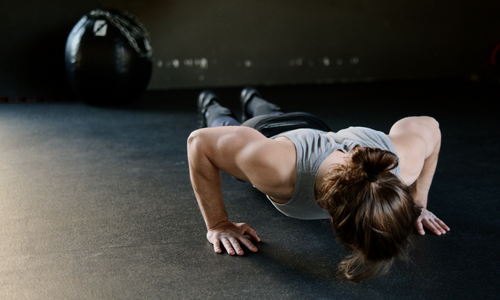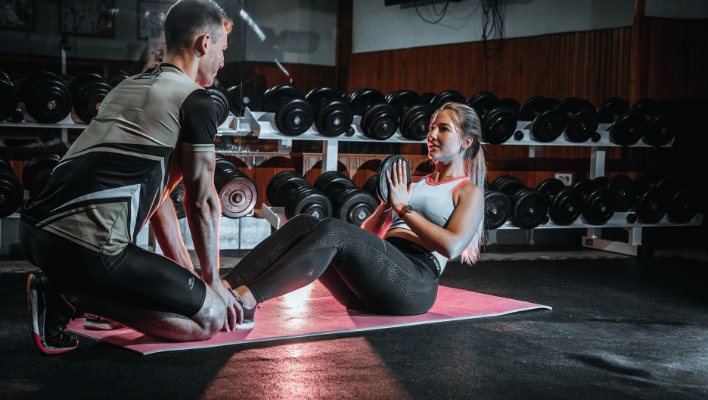Setting goals can help you achieve your fitness goals and keep you motivated. But it can be difficult to stay motivated to exercise, especially if you don’t see results right away. However, setting realistic and common fitness goals can help you make lasting changes to your lifestyle.

Most Common 7 Fitness Goals
The majority of people who begin a fitness program do so with the goal of losing weight. For some, this is the only goal, while others have a laundry list of things they hope to accomplish. It’s no secret that leading a healthier lifestyle can result in a slimmer waistline, but there are other benefits to be gained as well. If you’re starting a new fitness journey or simply looking to mix up your current routine, here are 7 common fitness goals to consider.
1. Lose weight
If your goal is to lose weight, then you need to focus on two things: reducing your calorie intake and increasing your physical activity. To do this, you need to create a calorie deficit. This means that you need to burn more calories than you consume. To create a calorie deficit, you can either eat fewer calories, or you can exercise more. If you want to lose weight quickly, then you need to create a large calorie deficit. However, this is not sustainable in the long-term. A more sustainable approach is to create a moderate calorie deficit and to combine it with regular exercise. You should aim to lose one kg of body fat every two weeks. During this time, you should exercise for 30 minutes most days of the week. Moreover, you should increase your lean meats, whole grains, and fresh fruits and vegetables
2. Gain Muscle

If your goal is to gain muscle, then you need to focus on two things: increasing your protein intake and increasing your physical activity. To do this, you need to eat more calories than you burn. To do this, you need to eat foods that are high in protein and to exercise regularly. Protein is essential for muscle growth, so you need to make sure that you are getting enough of it. You can get protein from meat, fish, eggs, and dairy products. You should also exercise regularly to stimulate muscle growth.
3. Get Stronger
Another common goal is to get stronger. Getting stronger doesn’t just mean lifting heavier weights at the gym. It can also mean improving your overall muscular endurance and becoming more powerful. Getting stronger can lead to better performance in your chosen sport, as well as improved health.
4. Increase Flexibility
Flexibility is an important part of fitness, and many people want to improve their flexibility. This can help with things like range of motion, joint pain, and muscle soreness.
To improve flexibility, you need to do stretching and flexibility exercises regularly. You should also focus on things like yoga and Pilates, which can help improve your flexibility.
5. Boost Cardio Endurance

When your goal is to increase your endurance, you’ll need to focus on two things: doing endurance exercises and eating healthy. This could mean running a longer distance without stopping, swimming for a longer period of time, or being able to ride your bike for a longer period of time. And to eat healthy, you’ll want to make sure you’re eating plenty of fruits, vegetables, and lean protein. You’ll also want to limit your intake of sugar, salt, and unhealthy fats.
6. Pull-ups
Pull-ups are a good test of your fitness. They can be challenging if you haven’t done them yet, so a pull-up goal is a great way to stay motivated. Adam Bornstein, a certified trainer and founder of Born Fitness, recommends standing on a box underneath the pull-up bar and hanging for as long as possible, then lowering slowly to a comfortable level.
7. Reduce stress
For many people, fitness is about more than just physical health. It is also about mental and emotional health. If you are looking to reduce stress, there are a few things you can do. First, try to find an activity that you enjoy and can do on a regular basis. This could be something like walking, yoga, or meditation. Additionally, make sure you are getting enough sleep and eating a healthy diet. It improves the health of your heart and bones and helps lower your risk of heart disease and type 2 diabetes. As you build your endurance, you should increase the distance of your weekly runs by about 1/8 mile. Then, add one mile to your weekly distance, recording the time without stopping.
8. Get Healthy
If your goal is to get healthy, you must focus on three things: eating healthy, exercising, and getting enough sleep. To eat healthy, you’ll want to make sure you’re eating plenty of fruits, vegetables, and lean protein. You’ll also want to limit your intake of sugar, salt, and unhealthy fats. As for exercise, you’ll need to do some form of cardio (like running, biking, or swimming) and strength training (like lifting weights) to see results. And finally, to get enough sleep, you should aim for 7-8 hours per night.
Most Common Body Goals For Fitness Fans
How to achieve my fitness goals?
Setting goals is one thing whereas achieving them is another. To reach your common fitness goals, you will need do some essential things that are stated below:
Set short-term goals: When setting your fitness goals, you should consider short-term goals. Short-term goals may be as simple as adjusting your diet or cutting out sodas. Specific goals may include adding a few reps or weights to your workout. Other short-term goals could be to increase the length of your run or swim a few more laps.

Set long-term goals: Here are a few tips to help you maintain your fitness goals long-term:
- Find an activity that you enjoy: If you find an activity that you enjoy, you are more likely to stick with it. There is no need to force yourself to do something that you hate. There are plenty of options out there, so find something that suits you.
- Set realistic goals: It is important to set realistic goals for yourself. If you set goals that are too lofty, you are setting yourself up for disappointment. However, if you set achievable goals, you will be more likely to stick with your fitness plan.
- Create a support network: Find friends or family members who are also interested in leading a more active lifestyle. This will help you stay motivated and on track.
- Find a coach or trainer: A coach or trainer can help you learn proper form and technique for your chosen activity. They can also help you set realistic goals and stay on track.
- Set a schedule: Creating a schedule is the first step toward achieving your fitness goals. By setting your goals on a calendar, you’re more likely to stick to them. Even if you cannot fit a workout into your busy schedule, you’ll be more likely to show up for it.
- Be patient: It takes time to see results from your efforts. Do not get discouraged if you do not see results immediately. Just keep at it and eventually you will see the results you are looking for.
Measure your progress: Investing in a fitness tracker can be a great way to stay motivated and to measure your progress. Seeing your progress each day can be a great way to stay motivated and to see the results of your hard work.
Make a plan: If you don’t have a plan, it’s easy to skip a workout or make excuses. Decide ahead of time when and where you’re going to work out, and put it in your schedule. This will make it more likely that you’ll actually do it.
Find an activity you enjoy: Working out is a lot easier if you actually enjoy the activity you’re doing. If you hate running, don’t force yourself to do it just because you think it’s the best way to lose weight. Find an activity that you can see yourself doing long-term and that you actually enjoy doing.
Reward yourself: Setting goals can help you achieve your fitness goals and keep you motivated. Overall, give yourself a small reward when you reach a fitness goal. This will help you stay motivated to keep going. For example, you could buy yourself a new workout outfit or a massage.. There are many fitness goals that can be accomplished by following a structured program. Whether your goal is weight loss, building muscle, endurance, or some other factor, a goal can help you stay motivated and get the best results.
With these tips, you’ll be on your way to achieving your long-term fitness goals.
Final thoughts
You should be aware that the fitness goals you set for yourself should be realistic and attainable. For example, you may want to lose half a kilogram per week. But, if you cannot lose a whole kilo per week, consider setting short-term goals that do not include weight loss. Remember, you’re the best person to judge whether or not you’re making progress.


3 thoughts on “The Most Common Fitness Goals And How To Achieve Them”
Comments are closed.